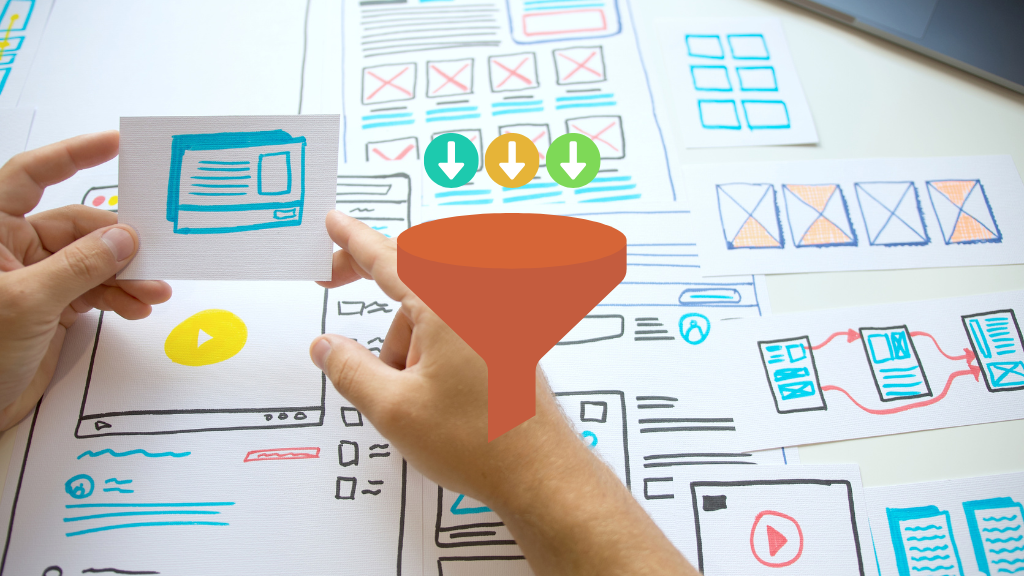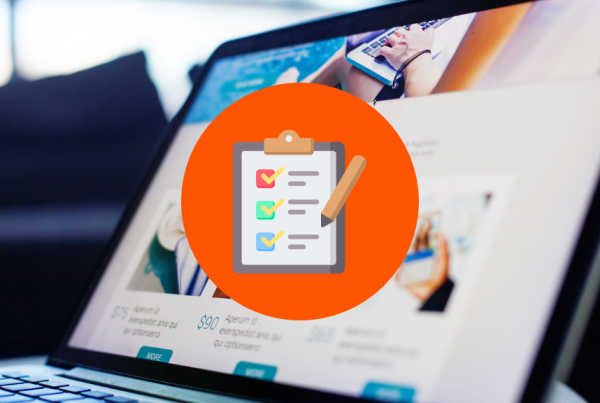Custom Design Elements That Drive Small Business Sales
Your website isn’t just a digital business card—it’s your hardest-working salesperson. For small businesses with limited marketing budgets, your website needs to do more than just look pretty. It needs to actively convert visitors into paying customers.
In this guide, we’ll explore the custom design elements that can transform your website from a passive information hub into a powerful sales tool (like this one 😉). These aren’t just nice-to-have design flourishes—they’re strategic elements that guide visitors toward becoming customers.
Why Custom Design Matters for Conversions
Many small businesses start with template websites because they’re affordable and quick to launch. While templates have their place, they often lack the strategic design elements that drive conversions.
Custom design isn’t about spending more money to look unique. It’s about tailoring your website’s user experience to match your specific customers’ needs and behaviors. When visitors feel a website was built with them in mind, they’re more likely to trust your business and take action.
Research shows that users form an opinion about a website within seconds of viewing it. Those quick judgments affect whether they stay, browse, or leave. Custom design elements help make those first impressions count.
Navigation That Guides the Journey
Your website’s navigation system does more than help people find information—it strategically guides visitors toward conversion points. Here’s how to optimize it:
Simple, clear menus make it easy for visitors to find what they need. Limit your main navigation to 5-7 items to prevent overwhelming choices. Use descriptive labels rather than clever ones. “Our Services” is clearer than “What We Do.”
Strategic menu ordering can significantly impact sales. Place your most profitable or popular services toward the beginning and end of your navigation menu—these positions get the most attention due to what psychologists call the “serial position effect.”
For mobile users, consider a progressive disclosure approach. This means showing simplified options first, then revealing more detailed choices as users dig deeper. This prevents small screens from becoming cluttered with too many options at once.
Custom mega-menus can work wonders for businesses with many products or services. These expanded dropdown menus can include images, featured offers, and clear categorization that guides users toward specific solutions for their needs.
Call-to-Action Buttons That Actually Convert
Your call-to-action (CTA) buttons are perhaps the most crucial conversion elements on your website. Generic buttons like “Submit” or “Click Here” significantly underperform compared to custom, action-oriented alternatives.
Effective CTAs use action verbs that speak to the benefit, not the process. “Grow Your Business Today” or “Start Saving Time” perform better than “Sign Up” because they focus on what the customer gains.
Button design matters tremendously. Make your CTAs stand out with contrasting colors that align with your brand palette but create visual emphasis. Research shows that buttons with rounded corners tend to convert better than sharp-edged ones, likely because they appear more approachable.
Strategic placement can double or triple your conversion rates. Place primary CTAs above the fold (visible without scrolling) but also at natural decision points throughout longer pages. For complex services, consider placing CTAs after you’ve addressed potential objections rather than before.
Size and spacing affect how “clickable” your buttons appear. Buttons should be large enough to stand out but not so large they look overwhelming. Surrounding your buttons with white space makes them more noticeable and easier to tap on mobile devices.
Custom Forms That Don’t Scare Customers Away
Contact forms are often conversion killers for small businesses. Many standard forms ask for too much information upfront, creating friction that drives potential customers away.
Progressive forms gather information in stages rather than all at once. Start by asking only for essential information (like email and name), then gather more details after establishing initial contact. This approach can increase form completion rates by 30-40%.
Field validation provides real-time feedback as customers fill out your forms. Custom validation messages written in a friendly, helpful tone can reduce form abandonment. For example, instead of “Error: Invalid Email Format,” try “Please check your email address—we want to make sure we can reach you.”
Auto-fill functionality saves returning visitors from re-entering information they’ve provided before. This small convenience significantly improves the user experience and shows that you value their time.
Multi-step forms break longer information requests into digestible chunks, showing progress indicators that motivate completion. This approach makes complex requests feel more manageable and can increase conversions for services that require detailed information.
Social Proof Elements That Build Trust
People trust other customers more than they trust businesses. Custom-designed social proof elements leverage this psychology to boost your credibility and conversions.
Case studies with visual results create powerful before-and-after narratives. These perform significantly better than generic testimonials. For maximum impact, design case studies with visual data that shows specific improvements your customers experienced.
Review integration goes beyond basic testimonials. Custom review displays can pull in ratings from Google, Yelp, or industry-specific platforms and present them in branded displays that highlight your most compelling feedback.
Customer logos displayed in a scrolling banner or grid can instantly communicate credibility, especially for B2B businesses. Even small businesses can create impressive logo sections by including local clients that your target audience will recognize.
Usage statistics and customer counts provide numerical validation of your business. Simple counters showing “Over 500 local businesses served” or “12,357 happy customers” tap into the power of social conformity—people want products and services that others are using successfully.
Custom Product/Service Displays
How you present your offerings visually has a tremendous impact on sales. Template websites often provide only basic display options, but custom elements can showcase your unique value.
Interactive comparison tools help customers understand which of your products or services best fits their needs. These side-by-side comparisons reduce decision paralysis and guide customers toward a choice rather than leaving without buying anything.
Benefit-focused imagery creates emotional connections with your offerings. Rather than showing just the product, show people experiencing the benefits. For services, custom illustrations or photographs demonstrating outcomes resonate more deeply than generic stock photos.
360-degree product views and zoom functionality give customers confidence in their purchase decisions by providing a more complete understanding of what they’re buying. This reduces uncertainty—a major conversion killer.
Pricing tables designed with psychological principles in mind can increase sales of your higher-tier offerings. Using the “decoy effect” by positioning your preferred offering between a basic option and a premium one can make the middle option appear more attractive and valuable.
Custom Content Presentation
How you package and present your content affects both engagement and conversions. Custom content layouts can transform standard information into compelling sales narratives.
Story-driven layouts guide visitors through a narrative that positions your product or service as the solution to their problems. These layouts typically follow a problem-agitation-solution format that resonates emotionally while building logical justification for the purchase.
Custom FAQ accordions can address sales objections before they become roadblocks. Design your FAQ section to anticipate concerns that typically prevent purchases and provide reassuring answers that smooth the path to conversion.
Value proposition blocks highlight your unique benefits in visually distinct sections. These custom elements use strategic white space, icons, and concise copy to make your key selling points impossible to miss.
“Choose your path” content forks allow visitors to self-select the information most relevant to them. This personalization significantly increases engagement by showing visitors you understand their specific needs and challenges.
Personalization Elements That Speak to Individuals
Websites that adapt to individual visitors convert better than static ones. Custom personalization elements create experiences that feel tailor-made for each potential customer.
Location-based content customization shows visitors information, examples, or pricing relevant to their geographic area. Something as simple as “Serving [Visitor’s City]” can create an immediate connection.
Behavior-based recommendations suggest products or content based on browsing history. These dynamic elements can significantly increase average order values and time on site.
Returning visitor recognition welcomes back previous visitors with personalized messaging. Custom welcome-back messages create continuity in the customer journey and make returning visitors feel valued.
Industry-specific content variations can automatically display different case studies, terminology, or examples based on information you have about the visitor’s business type or interests.
Mobile-Specific Conversion Elements
With over 60% of web traffic now coming from mobile devices, custom mobile conversion elements are no longer optional.
Sticky call-to-action bars that remain visible as users scroll ensure that conversion opportunities are always one tap away. These custom elements adapt to screen size while maintaining visibility without being intrusive.
Thumb-friendly navigation designs account for how people actually hold and interact with their phones. Placing important elements in the “thumb zone” makes your site more comfortable to use, which directly impacts conversion rates.
Simplified mobile forms dramatically reduce form fields on smaller screens. Custom mobile forms might collect only essential information initially and follow up with additional questions via email or on a subsequent visit.
Click-to-call buttons positioned prominently on mobile layouts provide an immediate connection option. For local businesses, this simple element often produces the highest conversion rates from mobile visitors.
Analytics Integration for Continuous Improvement
The most powerful custom website elements evolve based on real user data. Building analytics tracking into your design from the start creates a conversion optimization feedback loop.
Heat mapping visualization shows exactly where visitors click, how far they scroll, and what they ignore. This data helps refine button placement, content hierarchy, and overall page layout to maximize engagement with your most important elements.
Funnel tracking identifies exactly where potential customers drop off in your conversion process. Custom funnels built into your site design allow you to monitor each step and make targeted improvements where they’ll have the biggest impact.
A/B testing frameworks built into your site architecture make it easy to test different versions of key elements. This allows you to make decisions based on actual customer behavior rather than assumptions.
Goal conversion tracking connects specific design elements to revenue outcomes. This closes the loop between website investments and business results, helping you prioritize further improvements.
The Implementation Process
Building a high-converting website with custom elements requires a strategic approach:
- Start with user research to understand your specific customers’ needs, pain points, and decision-making processes. This foundational work ensures your custom elements address real customer behaviors rather than assumptions.
- Prioritize elements based on their potential impact on sales. Focus first on the elements most likely to influence purchase decisions for your specific business model.
- Work with designers who understand conversion principles, not just aesthetics. The best website designers combine visual creativity with marketing psychology and user experience best practices.
- Implement in phases rather than trying to perfect everything at once. Start with core conversion elements, measure results, then expand to more advanced features.
- Plan for ongoing optimization by building flexibility into your design. Your highest-converting elements will emerge through testing and refinement over time.
Conclusion: Custom Design as an Investment, Not an Expense
For small businesses, every dollar spent on your website needs to generate returns. Custom design elements focused on conversion aren’t luxury add-ons—they’re strategic investments that directly impact your bottom line.
The most successful small business websites aren’t the ones with the flashiest animations or the most cutting-edge technology. They’re the ones where every element has been thoughtfully designed to guide visitors toward becoming customers.
Start with the elements most likely to impact your specific business model, measure the results, and continue refining based on actual customer behavior. This data-driven approach to custom web design ensures your investment pays dividends in the form of increased sales and customer engagement.
Remember that conversion optimization is an ongoing process, not a one-time project. The most successful small business websites continuously evolve based on customer feedback and behavior. By approaching your website as a dynamic sales tool rather than a static digital brochure, you’ll create a powerful engine for business growth that outperforms your competition.




